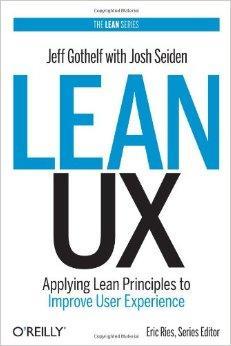































There's a pretty great,short post from Business Insider last year that's been getting re-circulation recently. It's one-sentence summaries of famous business books likeThe Innovator's Dilemma,Good to Great,Outliers, Purple CowandThe Lean Startup.
I particularly liked BI's short summary Eric Ries' book The Lean Startup, which is centered around the concept of creating a "minimum viable" product and then iterating on it, fed by with continual customer input and analytics. Here's the nicely done reductionist summary:
"Rather than work forward from a technology or a complex strategy, work backward from the needs of the customers and build the simplest product possible."
If you've been in tech the last few years -and especially in Silicon Valley -you won't have escaped the term "Minimum Viable Product" (MVP), and you've undoubtedly been immersed in Agile development methodology. But there's a dilemma in the seductive notion of Lean and MVP when misapplied: We all have seen teams who focus on the alluring idea ofminimal without thinking about what will make the productviablefrom the standpoint of the customer: Across industries, we've seen that the "work backward from the needs of the customers" part is easy to miss in the rush to produce efficient code and quick deliverables.
This occasional lack of customer orientation has led to the backlash observation that "Agile doesn't have a brain," meaning it's very good a producing efficiently, but not guaranteed to produce the right end products in the eyes of customers. We in tech have all seen this happen, and it's vexing because it's against the core principles of Agile to produce un-useful end deliverables.
Enter author Jeff Gothelf, an ardent evangelist for Lean and MVP thinking. Jeff is author of the excellent book Lean UX, and recently wrote about this "Agile doesn't have a brain" topic in a really interesting post on the subject.
Jeff is working with us on some upcoming talks and a workshop, and in addition to what he says in the post above, brings some good advice for including design and customer thinking to the MVP debate:
If you're new to ideas of incorporating the customer-oriented design into MVP and Lean, I recommend Jeff's book Lean UX. And, as a bonus, there's a great video overview he recently gave at Google on some of these topics.
Enjoy!

 Etiquetas calientes:
user experience
lean
Etiquetas calientes:
user experience
lean